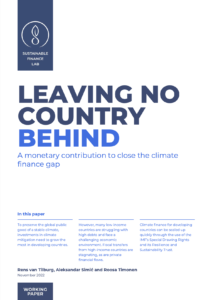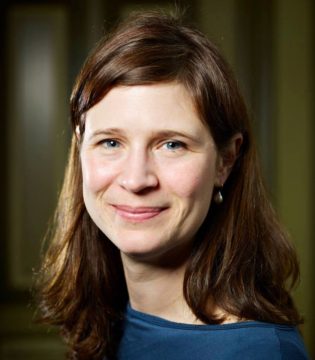Annually, an extra USD one trillion is needed for investing in climate mitigation in developing countries. In their new paper ‘Leaving no country behind’, the Sustainable Finance Lab (SFL) explores a promising route to fill this investment gap: increasing cheap and long-term loans through the IMF’s Resilience and Sustainability Trust. This can be done by rechanneling special drawing rights that currently sit idle on the balance sheets of high-income countries’ central banks.
Preserving a stable climate is a global public good. Investments in climate mitigation need to grow and they need to grow fast. While this is a worldwide issue, especially developing countries are in need to scale up their climate investments. Many low-income countries are however struggling with high debts and face a challenging economic environment. Therefore, even though clean energy infrastructure is currently often already cheaper (measured over the whole life cycle), liquidity-constrained governments are still often forced to choose the fossil fuel option as this has lower installation costs.
At the same time, fiscal transfers from high-income countries are also stagnating. The same goes for private financial flows. Thus, the global debt and cost-of-living crisis threaten to seal the fate of climate mitigation efforts.
An important contribution can be made through the issuance of the IMF’s special drawing rights (SDRs) and the utilisation of the IMF Resilience and Sustainability Trust (RST), which is resourced through the rechannelling of SDRs from high-income countries.
SFL member Irene van Staveren, professor of pluralist development economics at the Institute of Social Studies of Erasmus University Rotterdam:
“The costs of dealing with the consequences of climate change are much higher than the costs of mitigating it. While the US and Europe count for around 10% of the global population, they are responsible for almost 50% of all historical emissions. High-income countries should enable developing countries to make the necessary investments. That is not only a matter of economic interest, but also a matter of moral obligation.”
SFL co-chair Dirk Schoenmaker, professor banking and finance at Rotterdam School of Management, Erasmus University:
“With the current policies there is no realistic scenario in which the climate finance gap will be closed at the pace needed. Even though private finance is much needed, over the last decade there has not been any significant growth of it flowing to developing countries. Furthermore, private investments in the developing countries through blended finance, decreased from USD 150 billion in 2012 to less than USD 100 billion in 2019. In most developing countries public finance is still the most important source of climate finance. We cannot expect that this will change dramatically within the relevant timeframe. We therefore need to think about ways to quickly scale up the public funds available for climate investments in developing countries.”
SFL director Rens van Tilburg:
“To quickly close the climate finance gap in developing countries, we need to accept that public finance will play an important role in the coming years. USD 600 billion SDRs have been created, of which USD 250 billion went to low- and middle-income countries. High-income countries should quickly fulfil their pledge to rechannel USD 100 billion of SDR’s to developing countries. Moreover, there is another USD 300 billion of SDRs currently still sitting idle on the balance sheet of central banks in high-income countries and China. Those should be pledged to low-income countries as well. Lastly, the remaining climate investment gap should be evaluated every three years and new SDRs issued if needed.”
Read the full paper below or download here.



